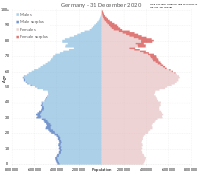
Photo from wikipedia
Abstract This article presents a mixed method analysis of the language attitudes held by secondary education students of Romanian origin, which are members of the second largest immigrant population living… Click to show full abstract
Abstract This article presents a mixed method analysis of the language attitudes held by secondary education students of Romanian origin, which are members of the second largest immigrant population living currently in Catalonia. The relevance of this data is based on the cardinal role played by attitudes in the success of any educational or linguistic policy (Lewis, E. Glyn. 1981. Bilingualism and bilingual education. Oxford, UK: Pergamon.) – a topic of special relevance in contexts with considerable migratory influxes, such as Catalonia, which aims to achieve social cohesiveness in a framework of interculturalism and multilingualism. The various initiatives implemented for this purpose include the heritage language maintenance programs, such as the “Romanian Language, Culture, and Civilization” (RLCC) program. The results showed that the young Romanians had the most favourable attitudes towards Spanish, followed closely by Romanian, and lastly Catalan, which was the least valued language. Furthermore, these attitudinal patterns were not determined by RLCC attendance. The insights provided by the in-depth interviews indicated various components and meanings associated with the attitudes towards the three languages. Namely, attitudes towards Spanish were primed by its international status and ease of learning, while attitudes towards Catalan were build on its integrative value and social status. Although esteemed for its emotional and symbolic bonds, Romanian seemed to be on a path towards invisibilization. Finally, the educational and social implications of these findings are discussed, emphasising the importance of involving and working with both the autochthonous and the Romanian immigrant population.
Journal Title: Multilingua
Year Published: 2019
Link to full text (if available)
Share on Social Media: Sign Up to like & get
recommendations!